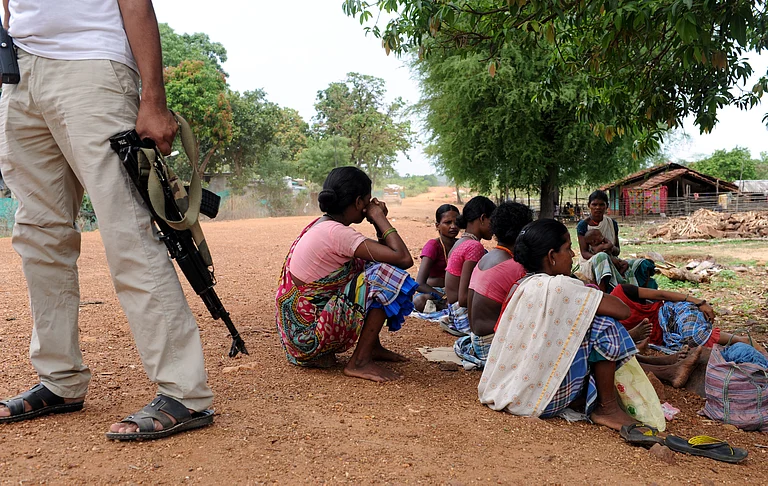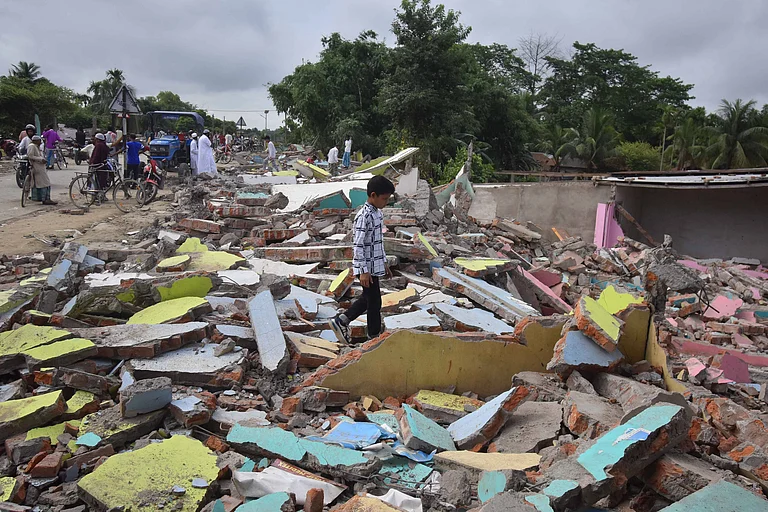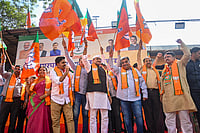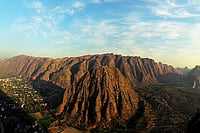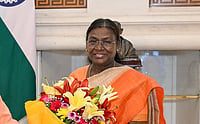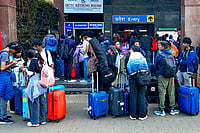India’s rich history is rooted in the culture and traditions of the over 10 crore indigenous people belonging to ‘Scheduled Tribes’, commonly known as ‘Adivasis’. Having a tribal concentration more than any other country in the world, India has through decades witnessed political campaigns, schemes and outreach programs to woo this significant section of the population. However, history has not always been kind to the Adivasi community. Despite the constitutional rights given to indigenous people and tribes upon India’s Independence, their struggle for survival – for their livelihood and existence as peoples – has continued to intensify.
Outlook takes a look at how tribalism politics has taken shape in India throughout history.
History of Adivasi politics
Historically, although Adivasis have not been regarded as unclean by caste Hindus in the same way as Dalits have been, they have repeatedly been prejudiced as “lesser humans” because they are socially distanced from mainstream society. Even today, it is not uncommon to come across derogatory upper caste slang referring to these people as “jangli”, literally meaning those who are like wild animals.
However, India has seen many spirited tribal movements across different regions – from Birsa Munda and Tantia Bhil in the northern and central parts, Komaram Bheem and Thalakkal Chandu in the south, to Rani Gaidinliu in the northeast. One of the first tribal people’s revolts in India under British Rule was triggered by the East India Company’s exploitative practices of the oppressive local princely class and zamindars who would levy unreasonable taxes from Adivasis. This rebellion was led by Tilka Manjhi, an Adivasi warrior, in the areas of present-day Bihar and Jharkhand, and became the foundation for many such movements to come.
Post-independence, tribal communities have been continually fighting against encroachment on their land, water, forest, language, culture and religion, and have shown resistance through mass movements that rose above the politics of region-based identity. However, the growing fragmentation of their habitats and homelands and the disruption of their cultures through predatory tourism and urbanisation have deprived them of their basic rights and means of livelihood.
A movement that has been widely recognised to play a significant role in demarcating the rights of Adivasi people was the statehood of Jharkhand, which ultimately received assent in 2000. Demands for a separate Jharkhand state were first made in 1914 by tribal groups who felt that the mineral-rich areas of Chota Nagpur and Santhal Pargana had been exploited, and the people were being racially discriminated against. Unfortunately, the creation of Jharkhand has left tribal people in the region more vulnerable. With token concessions of successive governments, displacement and development became synonymous and strategic reasons to continue oppressive measures.
Demand for Sarna religious code
For many decades, tribal groups mainly from Jharkhand, Bihar, Odisha, Assam, and West Bengal have demanded that they be identified as followers of a separate religious code called the Sarna Dharma. The holy grail of the Sarna faith is “Jal (water), Jungle (forest), Zameen (land)” and its followers are essentially nature worshippers who pray to the trees and hills seeking protection for the forest areas – their home and livelihood.
Between 1871 and 1951, tribals in India had a separate code, which they deemed essential for the protection of their language and history. However, this was changed around 1961-62. The Sarna code, activists and experts believe, would help tribals identify under their own religion rather than choosing Christianity, Hinduism and others.
In 2020, Hemant Soren’s Jharkhand government demanded the Centre to recognise Sarna as a religion and include it as a separate code in the census of 2021. Again, in 2022, when Droupadi Murmu, India’s first tribal President, was sworn into office, the tribes had rekindled hopes to fructify their long-standing demand to be enumerated as a distinct community under the nationwide census. But that has not happened. To this day, tribals are denied a separate code and considered “part of Hindus”.
Politics of visibility
A huge part of the tribal movement in India has to do with resisting the alienation of the community. Since independence, India’s democracy has been marked by politics of visibility – of political inclusion and economic exclusion. From the Panchayati Raj, PESA Rights Act to the Forest Rights Act, no law has proved sufficiently reassuring for tribals or Adivasis in terms of land, water, forest, cattle, credit and market resources. Although they exist on paper, they have been rendered practically ineffective as they continue to be controlled by a handful of wealthy non-tribals.
Meanwhile, the community has also been divided along the lines of caste and religion. This becomes particularly clear in the case of the Adivasi Muslims of Jharkhand, who have been struggling on a day-to-day basis for their small invisibilised community to retain their tribal status – a key to enjoying their land rights. The unanimous portrayal of Jharkhand as an Adivasi state without considering its class and ethnic distribution has over the years denied Muslims their desired visibilities.
Renewed outreach
Since 2014, Prime Minister Narendra Modi and the BJP have never missed an opportunity to woo the tribal votebank. They have frequently visited tribal-dominated areas, erected statues to honour local icons, constructed museums, announced development programmes and even chosen the country’s first tribal President.
However, tribes continue to lose their lands. Scheduled areas are still declared as backward areas, and the names of actual landowners continue to be replaced in land records. Land belonging to tribals, farmers and Dalits is, as a result, being forcibly seized and handed over to others.
Despite the many uproars and controversies around the displacement of tribal people, the voting patterns in recent years show that it has not made a dent in the popularity of the BJP within the community. In 2018, there were massive protests against several tribal issues, including poor implementation of the Forest Rights Act (FRA) 2006. The next year, the government’s move to amend the Indian Forest Act (IFA) also gained attention. Yet, in the 2019 Lok Sabha elections, BJP won 31 of the 47 seats reserved for Scheduled Tribes (STs) across the country, swayed by the party’s focus on nationalism.
Over the past 10 years, the BJP has successfully acquired the strategy to change the narrative and put nationalism above issues like displacement, mining, and implementation of forest rights. The focus is now to unite tribals under one banner of development. With Lok Sabha elections just a couple of months away, will the actual demands of tribal people be heard this time or will nationalism once again find resonance above all?








